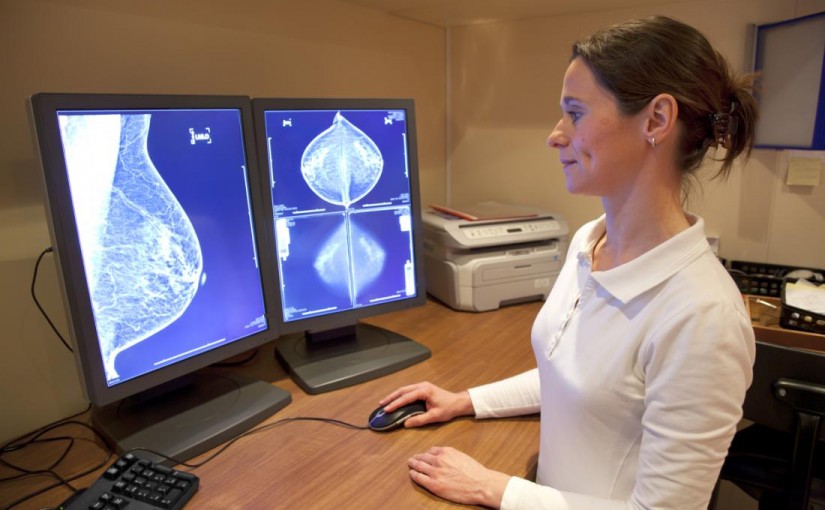A new study that followed 10,000 women provides more accurate, age-related estimates of the risk of developing breast and ovarian cancer in carriers of mutations of the BRCA1 and BRCA2 genes. It also suggests that family history and the location of the mutations on the gene should be taken into account.
The study – led by the University of Cambridge in the United Kingdom – is reported in JAMA.
The findings should help doctors to improve the advice and counseling they give on treatment options and risk-reducing lifestyle changes, suggest the researchers.
Lead author Antonis Antoniou, Ph.D., of Cambridge’s Department of Public Health and Primary Care, says, “We have been able to provide the most precise estimates of age-specific risks to date. These should provide more confidence in the counseling and clinical management of women with faults in the BRCA1 and BRCA2 genes.”
Cancer develops because of changes to genes that regulate the way that cells work, grow, and divide, causing them to get out of control.
Some of the genetic changes that lead to cancer are inherited, while others can arise during a person’s lifetime, due to either copy errors or environmental factors – such as exposure to tobacco smoke and radiation – that damage DNA.
Higher Risks From BRCA1 and BRCA2
Often, it is an accumulation of hundreds of genetic changes – each of which raises a person’s risk by a small amount – that causes cancer.
However, there are some genes, such as BRCA1 and BRCA2, where we know that mutations or errors in their code can greatly increase the risk of breast and ovarian cancer.
Normally, BRCA1 and BRCA2 help to protect against cancer, but certain mutations in one or both of the genes make cells “more likely to divide and change” more rapidly, giving rise to cancer.
The reason that the new study is significant is that until now, all risk assessments for patients with BRCA1 and BRCA2 mutations have relied on the results of “retrospective” studies – that is, those that look back on groups of patients who already have the disease.
Being “after the fact,” retrospective studies are prone to inherent problems such as bias and inaccuracies in recording and reporting of the desired information.
The new study is a prospective cohort study – it recruited a large group of nearly 10,000 cancer-free women with risk versions of BRCA1 and BRCA2 and followed them over a period, during which some of the women developed breast and ovarian cancer, while some did not.
Previous prospective studies of BRCA1 and BRCA2 have been done, but they have been very small – for example, the largest one had just 64 cases of breast cancer.
Age-Related Risk Profiles
When they analyzed the results, Dr. Antoniou and colleagues found that for carriers of BRCA1 mutations, the rates of breast cancer rose rapidly until the age of 30 to 40 years and then remained at the same level until the age of 80.
In the case of BRCA2 mutation carriers, the rates of breast cancer rose rapidly until the age of 40 to 50 years, and then also stayed at the same level until the age of 80.
The team found that the risk of developing breast cancer before the age of 80 was 72 percent for women carrying a faulty BRCA1 gene, and 69 percent for women carrying a faulty BRCA2 gene.
Similarly, the researchers found that the risk of developing ovarian cancer before the age of 80 was 44 percent for women carrying a faulty BRCA1 gene, and 17 percent for women carrying a faulty BRCA2 gene.
The risk of contralateral breast cancer – or developing cancer in the opposite breast – 20 years after having it diagnosed in the first breast was found to be 40 percent for carriers of a faulty BRCA1 gene, and 26 percent for carriers of a faulty BRCA2 gene.
However, in both breast and ovarian cancer, having a family history such as a relative diagnosed with one of the cancers would raise the risk. The amount of increase went up with the number of first- and second-degree relatives diagnosed with breast cancer.
Finally, the researchers discovered that the degree of cancer risk varies by position of the mutation within the BRCA1 or BRCA2 gene.
Dr. Charles Shapiro, director of Cancer Survivorship and Director of Translational Breast Cancer and Research at the Tisch Cancer Institute at Mount Sinai in New York City, NY, comments on the value of the new study:
“A single-institution [study] has too few of these women with inherited germ-line mutations to have sufficient numbers for valid statistical analysis. However, this study pooled the several results of several institutions leading to a relatively large sample. This combined analysis means there is more confidence in the results.”
To view this full article in The Clearity Portal, please click here.


